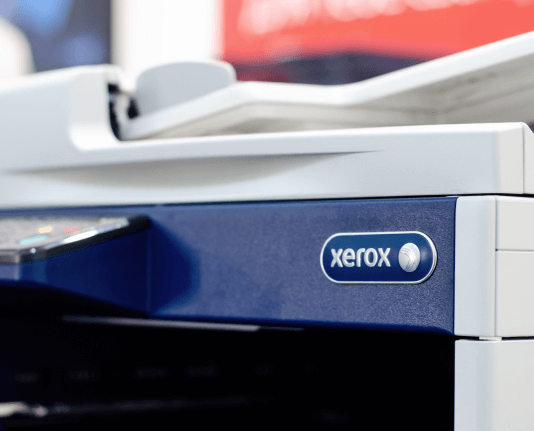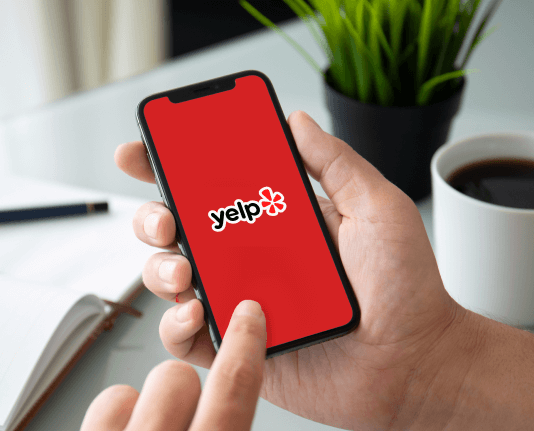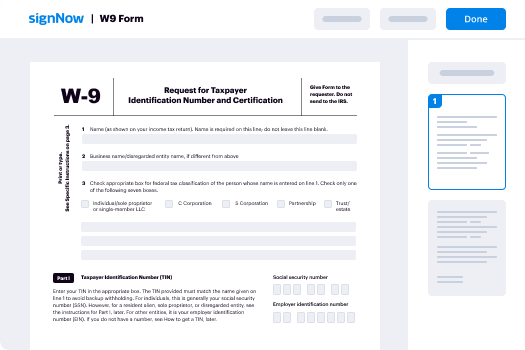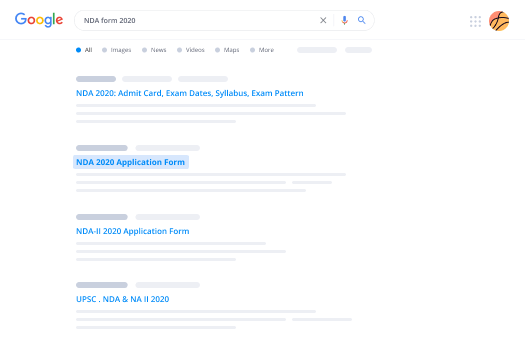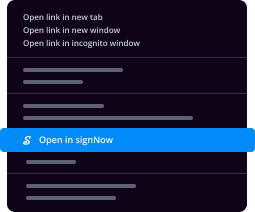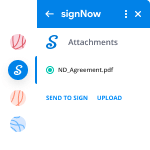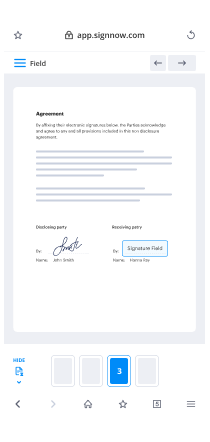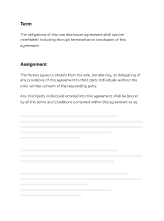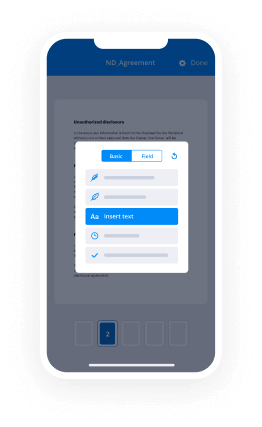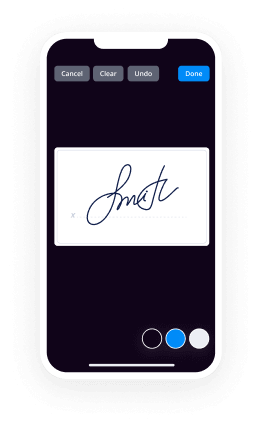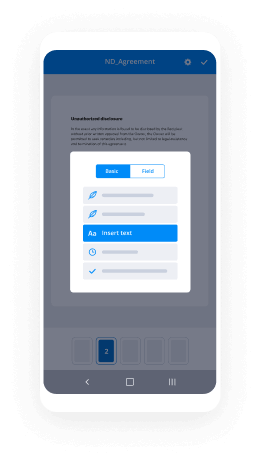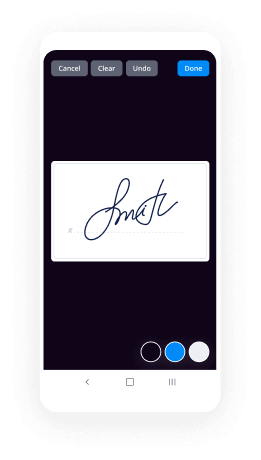Draw Sign Form Computer
Make the most out of your eSignature workflows with airSlate SignNow
Extensive suite of eSignature tools
Robust integration and API capabilities
Advanced security and compliance
Various collaboration tools
Enjoyable and stress-free signing experience
Extensive support
Keep your eSignature workflows on track
Our user reviews speak for themselves






How to digitally sign documents using airSlate SignNow
In the current technological era, the capability to electronically sign documents is crucial for productivity and ease of use. airSlate SignNow provides a powerful platform for enterprises aiming to optimize their signing workflows. This manual will guide you on how to efficiently utilize airSlate SignNow for your document signing requirements, allowing you to effortlessly perform digital signatures and manage electronic signatures with assurance.
Instructions to digitally sign documents with airSlate SignNow
- Launch your web browser and go to the airSlate SignNow website.
- Create a free trial account or access your existing account.
- Choose the document you want to sign or send for electronic signing.
- If you intend to use the document often, save it as a template for later use.
- Open your document to make any required modifications, such as adding fillable fields or inserting details.
- Sign the document and add signature fields for others who need to provide their signatures.
- Click 'Continue' to set up the eSignature invitation and dispatch it.
Using airSlate SignNow enables businesses to improve their workflows with substantial benefits. Its all-inclusive feature set offers great value, ensuring that you maximize your investment. The platform is crafted with ease of use in mind, making it simple to adopt and scale for small to medium-sized companies.
With clear pricing and no concealed fees, airSlate SignNow provides exceptional support around the clock for all paid plans. Begin simplifying your document signing process today by registering for airSlate SignNow!
How it works
Rate your experience
-
Best ROI. Our customers achieve an average 7x ROI within the first six months.
-
Scales with your use cases. From SMBs to mid-market, airSlate SignNow delivers results for businesses of all sizes.
-
Intuitive UI and API. Sign and send documents from your apps in minutes.
A smarter way to work: —how to industry sign banking integrate
FAQs
-
What is the computer sign draw feature in airSlate SignNow?
The computer sign draw feature in airSlate SignNow allows users to create custom signatures using their mouse or trackpad. This intuitive tool makes it easy to draw your signature directly on your documents, ensuring a personal touch for electronic signatures. It's perfect for businesses looking to streamline the signing process while maintaining a professional appearance.
-
How much does airSlate SignNow cost for using the computer sign draw feature?
airSlate SignNow offers a variety of pricing plans to fit different business needs, starting with a free trial. The computer sign draw feature is included in all paid plans, which are competitively priced to provide cost-effective solutions for businesses of all sizes. Check out our pricing page for detailed information on each plan.
-
Can I use the computer sign draw feature on mobile devices?
Yes, the computer sign draw feature in airSlate SignNow is designed to be user-friendly on both desktop and mobile devices. Users can easily draw their signatures on tablets and smartphones, providing flexibility for signing documents on the go. This ensures that you can manage your signing tasks anytime, anywhere.
-
What other features does airSlate SignNow offer alongside computer sign draw?
In addition to the computer sign draw feature, airSlate SignNow offers a range of tools such as document templates, automated workflows, and real-time tracking of document status. These features enhance your eSigning experience by improving efficiency and organization. Together, they make airSlate SignNow a comprehensive solution for all your document signing needs.
-
Is it secure to use the computer sign draw feature for signing documents?
Absolutely! The computer sign draw feature in airSlate SignNow operates under strict security protocols to protect your sensitive information. With features like SSL encryption and secure cloud storage, you can trust that your drawn signatures and documents are safe from unauthorized access.
-
Can I integrate airSlate SignNow with other software using the computer sign draw feature?
Yes, airSlate SignNow supports integrations with various software platforms, enhancing the functionality of the computer sign draw feature. Whether you use CRM systems, cloud storage services, or project management tools, you can easily connect them with airSlate SignNow to streamline your workflow.
-
How does the computer sign draw feature benefit my business?
The computer sign draw feature in airSlate SignNow provides your business with a quick and convenient way to obtain signatures. This not only speeds up the signing process but also enhances customer satisfaction by allowing them to sign documents easily. By incorporating this feature, your business can improve productivity and reduce turnaround times.
-
How do I get 90+ marks in Computer Networks-1 in VTU?
Hello, there! I will tell you how to score 90+ marks in ANY subject in VTU only if you promise to tell me how you stay motivated while studying for VTU exams! No, seriously, why why why would you want 90+ marks in VTU? Ugh.Okay, anyway, I gave the 5th Semester Computer Science Exams last week. Even though I'm not getting 90+ (Heck, I'm not sure if I'll cross 50), I'll give out a few tips.Oh, the good news - Computer Networks I is the easiest subject in 5th semester. Some will say, Software Engineering is the best but SE is full of crap so don't believe 'em.Steps to be followed:Collect all the previous years' question paper from 2011, preferably buy a Scanner. Choose the 5+1 units that you want to study. Note down all the previous years questions on a paper. Now open the prescribed textbook, that Forouzan one, and note down all the topics that haven't been asked ever.(Apologies for the bad handwriting. I never thought my notes would end up on Quora.)Make notes. DO NOT read other's notes, especially the notes you've downloaded off the net. People are lazy, they'll skip half the things and you'll study half of that and write half of that..and that means you've written only about 12.5% of the original content. So MAKE YOUR OWN NOTES.My dad always says, "Writing once is better than reading ten times". That's why, MAKE NOTES. In points.Prioritize bro. Emphasise on the previously asked questions. VTU peeps are too lazy to form new questions, most of the questions are repeated. (OKAY SERIOUSLY. MY HANDWRITING IS NOT THAT BAD, RIGHT?)Once you're done with the previous years and almost avoided sinking into depression, make notes on the left out topics.Now mug the hell out! Point to point. Word to word. Diagram to diagram. Mug. Mug. MUG!If you happen to have poor memory retention, teach the concepts to your water bottle (They're very good listeners!). This way, you'll understand the concepts better and remember better.Do 5 units thoroughly. And if you're jobless and insane, do the 6th one.Okay, we're almost done.On the day of exam:Wake up at 3 AM (Get at least 5 hours of sleep). Read your notes again. Revise, recall.Do Mari Amman Pooja. Recite all the shlokas you know. Singing Allah Hu Akbar is also very much appreciated. Get to college at 7 AM. Listen to Suprabhatham by M.S. Subbulaxmi during the commute.Sit in some corner, away from all the toppers who are born just to lower your confidence on the day of the exam. Open scanner and glance through everything. Okay, done, now.Get inside the hall at 9 AM. Fill the booklet carefully and sign in those hundred thousand pages.At 9:30, get into SPARTA mode. Attack the paper. For 10 marks questions, write at least 3 pages. Write every shit you know, draw all the god damn diagrams, write in points, underline important keywords and sentences, draw a line after each answer while maintaining good handwriting.VTU LOGIC = LENGTHIER THE ANSWER, SMARTER THE KID, LET'S GIVE HIM MORE MARKS!Fill the entire 43 pages to let the evaluator know you're a friggin' GENIUS!Now in the one month holiday, visit Dharmasthala, Tirupathi, Kashi, Ajmer Durga, Churches in Goa, Golden Temple and all other holy places in India and pray! Beg the lord that your evaluator should be kind-hearted guy and his mood while evaluating your paper is good.Congratulations. You're done now.If you still don't get 90+ marks, just know that it's not your fault, kid. It's not unheard of that VTU evaluators can be real jerks. They evaluate you on the basis their mood.I had written for about 120 marks in my OOP and Logic Design paper, filled all 43 pages and expected 90+. But I got 70 in each (which is like an achievement!)You can try threatening the evaluator - "NoD maga, 90+ koDu...illandre..!!" (give 90+..or else!!) 90+ in VTU is lol. Anyway, all the best.P.S. If you manage to get 90+, please do send Cheese Burst Pizza and Diet Coke to my house.
-
As a programmer, what is your most controversial opinion related to programming?
We programmers are in a constant battle between order and chaos. Computers have no problem with chaos—they happily execute the most convoluted spaghetti code without breaking a sweat or stressing their cache. But we humans must have order. We cannot fit too much complexity into our brains, so we try to chain the forces of chaos with order. Structures, objects, functions, and protocols are all attempts to impose order.My controversial opinion is that we sometimes go too far, and that embracing vibrant, diverse chaos might sometimes be better than sterile order.The entire history of programming—as a science and as an engineering discipline—can be told as various attempts to control chaos. When Edsger Dijkstra wrote Go To Statement Considered Harmful in 1968(!) he was worried that Go To statements—jumping from one point in the code to another—were a major source of errors. His solution: get rid of them.Indeed, banning has became the preferred way to avoid chaos: Get rid of global variables; get rid of access to internal variables; get rid of memory management; get rid of procedures. Every solution to reduce complexity came with a reduction in freedom. Was the trade-off worth it? In most cases, yes, but not always and not in all cases.It’s true: few of us use Go To statements anymore, and I certainly don’t miss them. But if you’ve ever stepped through the machine code generated by your optimizing compiler you’ll be amazed by the number of Go To instructions. Go Tos are invaluable for creating tight, high-performance code. But they are too complicated for humans to use, so only machines are allowed to use them.We have chained chaos by chaining ourselves.It wasn’t always that way. Almost at the beginning we had Lisp—a language so simple a first-year CS major could implement it, yet so powerful that it was used to make the first forays into Artificial Intelligence. Lisp’s distinguishing property is that it treats code and data interchangeably. Code is just data and data can be code. In Lisp you can write a program that writes other programs. You can even write a Lisp program that modifies itself.But such powers trigger a primal programmer instinct: fear of chaos. Who’s in control? How would you debug such a thing? How could you be sure it works?Lisp never gained the popularity of other, more constrained, languages. And whenever the concept of self-modifying code resurfaces, such as in JavaScript’s eval function, the wisdom of the crowd quickly bans it. We dare not risk chaos.Yet the power of self-modifying code is undeniable. The first version of Windows used it to implement its graphical blit operator, which had 256 different variations, but had to be extremely small and fast.Similarly, today’s deep learning neural networks, the basis for Siri and Alexa, are essentially self-modifying programs. They alter themselves in response to a deluge of data. You can’t program a neural network by hand—you have to train it. And once trained, you can’t necessarily understand precisely why it works.If and when we develop human-level AI, it will be more chaotic than any existing program today.Imposing order on chaos is what programming is all about. We would not have gotten this far without structured programming or declarative languages or engineering methodologies. Yet at the same time, some of the most interesting advancements have come from embracing the chaos that we’re trying to protect ourselves from.The other answers to this Quora question are filled with commandments, strictures, and prohibitions: don’t separate code from comments; always have a test plan; don’t use tabs instead of spaces.These edicts are all intended to bring order to a chaotic endeavor—maybe the most chaotic endeavor humans have ever participated in. I’m not going to tell you to ignore them—there is much wisdom there.But before you chain yourself (or your employees) to the latest revolutionary programming methodology, ask yourself what powers you’re giving up. Don’t let fear of chaos blind you to its possibilities.
-
Do Israelis draw the hyphen, the equals sign, or the dash from right to left?
This is a very valid question, as it bears upon the Six Laws of Chirodynamics, or tendencies of the (right) hand when writing.Hebrew is written from right to left, and yet the tendencies of the writing hand are the same as when writing in Roman, Greek, Cyrillic, or other left to right scripts. These are as follows:Handwriting tends to be slanted to the right, regardless of the script:2. Barbed hooks tend loop when written from right to left:3. Roman/Greek/Cyrillic characters tend to occupy the lower half of the ‘chirodynamic ellipse’—while Hebrew tends to occupy the upper half:4. Circles tend to be drawn anticlockwise; clockwise circles tend to spiral:5. Baseline-to-baseline arcs are comfortable only in a left-to-right direction:6. Horizontal strokes are comfortable only in a left-to-right direction:Collectively, these laws explain why cursive Hebrew characters are written the way they are. Specifically, Law #6 tells us that hyphens or dashes tend to be written from left to right, even when writing in Hebrew—and so it is.
-
Which is a better tool for hand lettering: pencil or brush pen?
The current wildly popular brush lettering style is done with a brush pen or brush marker.This is actually a genuine type of calligraphy, which is to say that the pressure of the brush pen creates the thin and thick lines of the lettering.A very different form of lettering is done by drawing out the lines and filling them.Sign painters and lettering artists in the pre-computer age of the 20th century used both brush lettering and build up methods of lettering.
-
What surprising insight into human behavior or the human condition have you learned using Quora?
I am a patriotic, social/economic liberal. Yet I was raised in a very Conservative, and religious home/environment and have exhaustive empathy and understanding for people’s opposing viewpoints as long as no other human is harmed for the practice of those viewpoints. I like to have intelligent, unemotional, calm, and sane conversations about things, especially about science.I was shocked at the following….RHETORICAL AND LOADED QUESTIONS. I was shocked at the amount of rhetorical and loaded questions posed by people on Quora. I came here seeing that this was a “Q and A” website. If I had to estimate, I would say this is a 65% question website, and a 35% I-want-to-denigrate-a-social-group/person/generation website. There is a lot of bigotry and ignorance in both the conservative/liberal and nondiscolsed-mindset communities on Quora. I was hoping there wouldn’t be.THAT HUNDREDS OF THOUSANDS OF PEOPLE CARE ABOUT AN ANSWER I WROTE ABOUT MOVIES. I was surprised to see that the answers I put a lot of effort into about Tornadoes and the science of them, only about 50 or so people even viewed it. Maybe one upvoted it. Then I wrote an answer on movies with shocking endings. 300 THOUSAND views. I kid you not.POOR OPINIONATED ANSWERS TO NON-OPINION BASED QUESTIONS. I was shocked at the multitude of poor answers that were not rooted in fact even citing articles in their prose (which had nothing to do with proving their “fact.”) I first saw a few of Robert Frost’s answers. My first thought was: “It’s awesome that there is a guy named after the famous poet and he works for NASA.” He answers things pretty succinctly. This guy knows how to write an answer. Bravo humanity. However, I was shocked at how many people did not even adopt a similar “point/supporting evidence that is rational” model that Robert and a dozen other frequent writers used. There are many people here who do not know how to write an impartial, factual answer.MEAN IRRATIONAL COMMENTS. I was shocked at the terrible comments that were made. I at first engaged with these comments (a mistake) and found that people don’t want to have a rational discussion, they want to make emotional platitudes. Initially when I got here to Quora, I made the mistake of responding to mean comments instead of just reporting them. Now I just ignore them, or report them.LACK OF IMAGINATION AND VOCABULARY. People have sub-par vocabulary or they simply steal it from others (myself included). I was shocked at how many people simply repeat the same words used in a previous comment in their own (as if it makes them appear more valid in their argument). I am guilty of it as well in the past, but have forced myself over and over to actually look up synonyms for words that better describe the idea I’m communicating.TOP WRITERS THAT INSULT PEOPLE. I’ve come across more than I think there would be. All Top writers are not a perfectly esteemed group of sentinels that act rationally and with integrity all the time. They are people with flaws (same as non-top writers). They are human. Consequently there are quite a few of them that do not have rational discussions about factual topics and throw around insults when they are met with factual information that contradicts a statement they made. As politely as I can say this, that is “not cool.” I’m not attacking Top Writers. I am simply making the observation that I’ve seen quite a few of them who have had less than decent or rational discussions with others.These things I expected to some degree, but not to as large a degree as I have seen them. It may be because I write about politics, and the entertainment industry. But, I have even seen them when I write a piece on a SCIENTIFICALLY BASED topic like physics. Sometimes when the laws of physics or numbers are staring people right in the face, they will find a way to say something irrational about it that makes no sense.
-
Is it a good idea to join IIIT-H if I love computer science but don't like coding?
Absolutely. People often do not draw the distinction between learning how to program and how to code. Every day activities - something as simple as tying your laces is a program. It's a series of steps to finish a certain task. You could describe those steps in English or Hindi or some other form like sign language or C++.Some of the best minds in computer science barely do any programming. People working in various fields like algorithms, cryptography, distributed computing information theory, quantum computing and the likes rarely write code if ever. One of the seminal books in the history of computer science education titled "The art of computer programming" makes no use of standard programming languages but rather a custom pseudo code thats an offshoot of English!
-
How did Jared Morgenstern get recruited to Facebook?
In late 2003, I started a social networking company with Eddie Lim and Eoin Matthews called Metails.com, short for "Details about Me." If you were looking a girl's profile, it was her Shetails; if you were looking at a guy's profile, his Hetails. The concept was to enable individuals to express the products and brands they loved - their style - as part of their identity. By doing so, our goal was to facilitate product and brand discovery free from any advertising bias. Metails enabled you to import your purchases from dozens of e-commerce partners. These products became part of your profile and when your friends purchased an item, our site got a commission and we redistributed the commission between the buyer and the recommender. The concept was to enable buying based on word of mouth, cut out the middle man advertisers, and redistribute value to those involved. In addition to products, your profile included many of the aspects of the then popular Friendster: photos, blogs, and comments. We launched on January 15th, 2004. Facebook launched less than three weeks later, as TheFacebook.com, on February 4th, 2004. I studied it hard. At first only current students could sign up, but there was a sign-up form for alumni to get notified as soon as the site was opened up. I filled that out and waited. Several days or weeks later, I was notified that I could sign up. I was user number 703. I was impressed with the speed and the simplicity of the site, including the 3 bullet points that described its purpose on the main login page. Several friends encouraged me to try to talk with Mark Zuckerberg about possibly working together. I did not do this immediately. I waited four weeks to see how it would grow. I discovered that we were using the same hosting provider and that [sitename]/stats yielded traffic charts for both of our sites. Facebook's dense college network-based growth (at that time, Harvard only) was surpassing our product interest graph growth rapidly.Then, two things caused me to signNow out. The first was that I realized they were going to expand to more schools. The second was that I read Mark's comments defending the site's privacy model and controls on a yahoo Harvard alumni group. It was clear to me that he was very sophisticated in his thinking. A friend of mine, I believe it was Tali Rapaport, introduced us via email and Mark and I planned to meet at Finagle Bagel in Harvard Square. Mark was 10 minutes late to the meeting, and I recall being frustrated. I'm not sure what I was expecting, but within 5 minutes of our interaction, I switched immediately to selling our vision and team members and a way we could work together. This was not what I had planned to do, in fact, I thought quite the opposite - that Mark would try to pitch me on why Facebook was the next best thing. But it was clear from the start that Mark was different. He wasn't reacting to normal social cues - jokes, pauses - he was very concentrated on evaluating the content of my communication. And he was very excited that our monetization approach - friend recommendations - was built into the fabric of the site, a stark contrast to the banner ad companies that had been pitching him.After that meeting, I focused more than 50% of my effort creating screenshots to fill a proposal for how Metails could power word of mouth recommendations and advertising for local businesses, national products and global brands, including how we'd walk from door to door to all the merchants in Harvard Square to get started. The email dialog around the proposals gave me an opportunity to understand a little more about how Mark thought about the world and the same of me for him. Previously we had seen each other in the computer science labs. The proposal was never accepted, but Mark and I became email pen pals and bounced ideas off of one another about once every quarter. He was rapidly opening up school after school my team was acquired by Buy.com, one of our partner merchants. We both had moved from our college towns to the west coast.After a year at Buy.com, it was clear to me that the innovation in the social space was occurring elsewhere. I had learned a lot about myself - both my limitations and my strengths - transitioning Metails into Yub.com (http://www.yub.com/people/?userID=1 - it remains largely the same today as when I left). At each step of the way I was observing what we were doing and how Facebook was approaching a similar problem. It was clear I wanted to start something new, work for Google, or work for Facebook, and Facebook was at the top of my list.I signNowed back out to Mark directly in November of 2005:Mark said, you should come here, and here's our recruiter. My interviews included Dustin Moskovitz, Aaron Sittig, and Soleio. Dustin and I talked about mobile, his desk side by side with Zuck's in the corner of 156. Aaron wore a very intimidating asymmetric sweater and was very hard to read. Soleio had standing desk and made me draw wireframes on photocopied outlines of the main components of the site. I received 2 homework assignments that night, and I stayed up late - powering through the start of a cold - to make sure they had it by 2:00am (assignment 1: http://www.facebook.com/photo.ph... and assignment 2: http://www.facebook.com/photo.ph...).I started on February 13th, 2006 with Eddie Lim, Jon Warman, and James Wang, about two years after Facebook launched. Since then, my focus has never strayed too far from the original conversation I had with Mark at Finagle Bagel in Harvard Square - aligning company monetization with the interests of our users.
Trusted esignature solution— what our customers are saying
Get legally-binding signatures now!
Related searches to Draw Sign Form Computer
Frequently asked questions
How do i add an electronic signature to a word document?
How to do electronic signature in docs?
How toi set password on e sign pdf?
Get more for Draw Sign Form Computer
Find out other Draw Sign Form Computer
- Form mta 5 1reconciliation of estimated metropolitan tax ny
- Staple forms here ct 184 m amended return employer identification number new york state department of taxation and finance 983763
- Information needed to export mutant rats and to ut southwestern
- Residential docks and piers form
- Notice of intent form and instructions for 2 acres or less the
- Notice of intent noi for stormwater discharges from large and scdhec form
- Information texas coastal geology
- La g nesis del paisaje medieval en lava la formaci n de la red
- Fy capital magnet fund form
- May 30 dear beekeeper please be advised that nyc gov nyc form
- Form controls
- Table of contents naic naic form
- Download the application joann falletta international guitar form
- Awardee faqs cdfi fund cdfifund form
- 20 supporting information retrieval in peer to peer systems l3s
- Solving systems of equations graphically examples beacon form
- Charitable tuition program enrollment kit state of michigan michigan form
- Projectevent grants guidelines and form the 4 h 4hfoundationofsoco
- Irs announces voluntary compliance program to promote disclosure by political form
- H probateforms forms form no 021 instructions to fiduciary for

